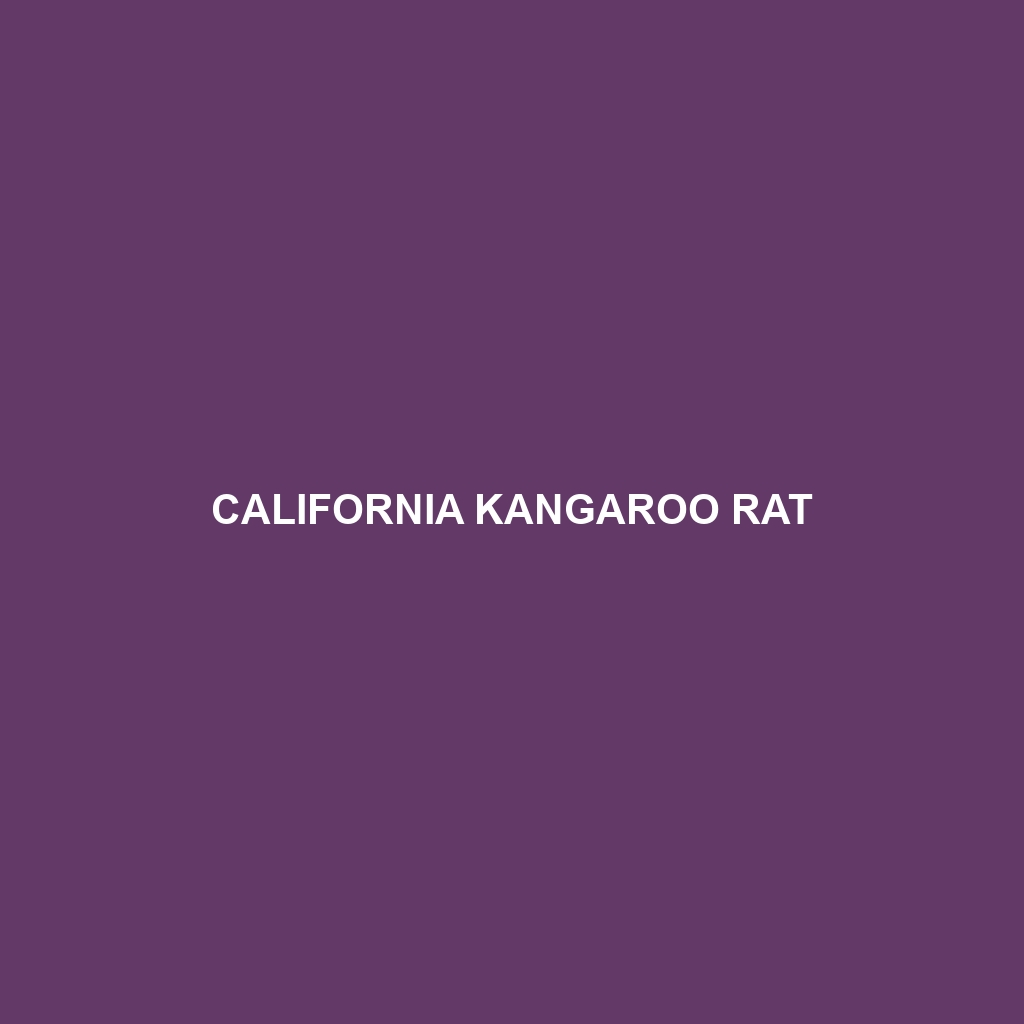California Kangaroo Rat
Common Name: California Kangaroo Rat
Scientific Name: Dipodomys californicus
Habitat
The California Kangaroo Rat is primarily found in arid regions, particularly within the sandy and loose soils of California’s deserts and grasslands. Its range extends across the San Joaquin Valley, parts of the Sierra Nevada foothills, and along the coastal ranges, thriving in environments characterized by sparse vegetation and little moisture. This species is well-adapted to drought-prone habitats and often constructs extensive burrow systems to escape the heat and predators.
Physical Characteristics
California Kangaroo Rats are medium-sized rodents, measuring approximately 12 to 14 inches long, including their long, tufted tails which can be even longer than their bodies. They typically weigh between 3 to 5 ounces. Their fur is generally a sandy brown color, providing camouflage against their desert surroundings, and they possess long hind limbs adapted for powerful jumping. Their large eyes and ears are distinctive features, enhancing their ability to spot predators in their environment.
Behavior
These nocturnal creatures display fascinating behaviors that reflect their adaptation to desert life. California Kangaroo Rats are known for their impressive leaping ability, using their powerful legs to escape threats. They are solitary animals and primarily communicate through scent marking. Their burrowing habits not only offer shelter but also create a complex network of tunnels that help in regulating temperature and humidity.
Diet
The diet of the California Kangaroo Rat mainly consists of seeds, grains, and plant material, with a particular preference for seeds of grasses and legumes. These rodents exhibit a behavior known as “hoarding,” where they collect and store food in their burrows for later consumption, allowing them to survive during dry spells when food is scarce. Their ability to extract moisture from their food means they can often go for extended periods without direct water intake.
Reproduction
The breeding season for the California Kangaroo Rat typically occurs in the spring and early summer. After a gestation period of about 30 days, females give birth to litters ranging from two to five offspring. The young are weaned after about three weeks and become independent shortly thereafter. Notable maternal behaviors include constructing insulated nesting chambers within burrows for the protection of the young.
Conservation Status
Currently, the California Kangaroo Rat is listed as “Vulnerable” due to habitat loss caused by agricultural expansion and urban development. Conservation efforts are essential to protect their remaining habitats and ensure the survival of this unique species in the wild.
Interesting Facts
One fascinating aspect of the California Kangaroo Rat is its ability to survive without drinking water, obtaining all the moisture it needs from its diet. Additionally, these kangaroo rats can leap distances of up to 10 feet in a single bound, making them one of the most agile rodents in North America. Their remarkable adaptations have made them a subject of interest in studies regarding desert survival strategies.
Role in Ecosystem
The California Kangaroo Rat plays a crucial role in its ecosystem as a seed disperser, helping to maintain the balance of plant species in its habitat. By hoarding seeds, they inadvertently aid in the germination of various plants, promoting biodiversity. They also serve as a food source for a variety of predators, thus contributing to the food web dynamics within desert ecosystems.
